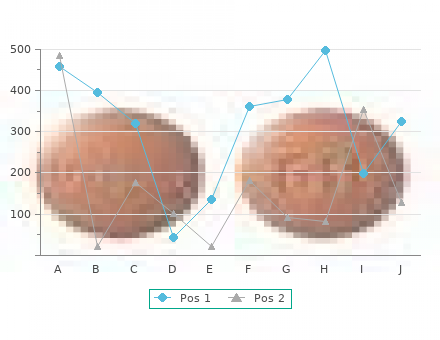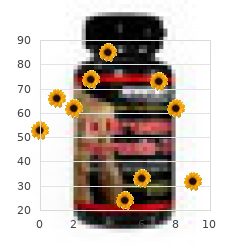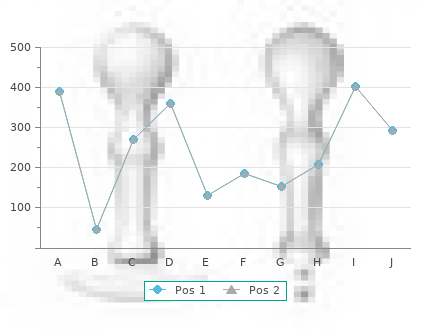Cialis Super Active
By T. Killian. Cleveland Chiropractic College. 2018.
Effectiveness of clozapine order cialis super active 20mg with visa impotence treatments, olanzapine cheap 20 mg cialis super active with visa erectile dysfunction drugs injection, quetiapine, risperidone, and haloperidol monotherapy in reducing hostile and aggressive behavior in outpatients treated for schizophrenia: A prospective naturalistic study (IC- SOHO). Comparison of antipsychotic medication effects on reducing violence in people with schizophrenia. Schizophrenia, Clinical Antipsychotic Trials of Intervention Effectiveness (CATIE) and number needed to treat: how can CATIE inform clinicians? Antipsychotic type and correlates of antipsychotic treatment discontinuation in the outpatient treatment of schizophrenia. Chen C-H, Chiu C-C, Huang M-C, Wu T-H, Liu H-C, Lu M-L. Metformin for metabolic dysregulation in schizophrenic patients treated with olanzapine. Gianfrancesco FD, Rajagopalan K, Sajatovic M, Wang R-H. Treatment adherence among patients with schizophrenia treated with atypical and typical antipsychotics. Risperidone versus clozapine in the treatment of schizophrenic patients with acute symptoms: a double-blind, randomised trial. Mori K, Nagao M, Yamashita H, Morinobu S, Yamawaki S. Effect of switching to atypical antipsychotics on memory in patients with chronic schizophrenia. Overt Aggression and Psychotic Symptoms in Patients With Schizophrenia Treated With Clozapine, Olanzapine, Risperidone, or Haloperidol. Atypical antipsychotic drugs Page 173 of 230 Final Report Update 3 Drug Effectiveness Review Project 253. Kraus JE, Sheitman BB, Cook A, Reviere R, Lieberman JA. Olanzapine versus risperidone in newly admitted acutely ill psychotic patients. Pharmacy cost evaluation of risperidone, olanzapine, and quetiapine for the treatment of schizophrenia in acute care inpatient settings. A retrospective and naturalistic review comparing outcomes of patients treated with olanzapine or risperidone. Journal of the European College of Neuropsychopharmacology. Efficacy of accelerated dose titration of olanzapine with adjunctive lorazepam to treat acute agitation in schizophrenia. Measurement-based psychiatry: definitions of response, remission, stability, and relapse in schizophrenia. Leucht S, Kane JM, Kissling W, Hamann J, Etschel E, Engel RR. Bondolfi G, Baumann P, Patris M, May J, Billeter U, Dufour H. A Randomized Double- bind Trial of Risperidone Versus Clozapine for Treatment-resistant Chronic Schizophrenia. Paper presented at: 8th European College of Neuropsychopharmacology Congress, 1995; Venice, Italy. Should we consider mood disturbance in schizophrenia as an important determinant of quality of life? A comparative efficacy and safety study of long-acting risperidone injection and risperidone oral tablets among hospitalized patients: 12-week randomized, single-blind study. FDA Statistical Review of Iloperidone: New Drug Application. Efficacy of iloperidone in the treatment of schizophrenia: initial phase 3 studies. Weiden PJ, Cutler AJ, Polymeropoulos MH, Wolfgang CD.
The content and conclusions of the report were entirely determined by the Evidence-based Practice Center researchers cialis super active 20mg overnight delivery impotence yohimbe. The authors of this report have no financial interest in any company that makes or distributes the products reviewed in this report buy cialis super active 20 mg overnight delivery psychological erectile dysfunction drugs. MS drugs addendum: fingolimod 5 of 32 Final Original Report Drug Effectiveness Review Project INTRODUCTION In the Drug Effectiveness Review Project Report on Disease-modifying Drugs for Multiple Sclerosis, 5 injectable drugs were reviewed in comparison with each other (most recent update, August 2010). Since that time, an oral medication, fingolimod (Gilenya™) was approved in the United States and Canada for patients with relapsing forms of multiple sclerosis to reduce the frequency of clinical exacerbations and to delay the accumulation of physical disability. Fingolimod is a sphingosine 1-phosphate receptor modulator and is reported to work at least in part though reducing lymphocyte migration into the central nervous system. It is thought to result in redistribution of autoaggressive lymphocytes (T cells and B cells) to the lymph nodes and away from the central nervous system. The purpose of this addendum to the larger report on drugs to treat multiple sclerosis is to review the evidence on the comparative effectiveness and harms of fingolimod compared to the 2 other 5 drugs previously reviewed. Placebo-controlled evidence will be used only where comparative data are not available. A glossary of terms used in Drug Effectiveness Review Project Reports is included in the main report on disease-modifying drugs for multiple sclerosis. Included drugs Dosage and Agent administration Indication Mechanism of action Patients with relapsing forms of A sphingosine 1-phosphate receptor multiple sclerosis to reduce the modulator and is reported to work at Fingolimod 0. Effective in periphery into the CNS by PS once weekly patients who experienced first decreasing the production of clinical episode and have MRI adhesion molecules and increasing features consistent with MS the production of metalloproteases Treatment of relapsing forms of on the vascular endothelium that 22 or 44 mcg MS to decrease the frequency of constitutes the blood brain barrier. Interferon beta-1a Subcutaneously ® clinical exacerbations and delay These agents may also inhibit the Rebif three times the accumulation of physical generation of pro-inflammatory weekly disability cytokines from Th1 cells (TNFα, Treatment of relapsing forms of IFNγ, IL-12). Effective in Every other day patients who experienced first MS drugs addendum: fingolimod 6 of 32 Final Original Report Drug Effectiveness Review Project Dosage and Agent administration Indication Mechanism of action clinical episode and have MRI features consistent with MS Treatment of relapsing forms of MS to reduce frequency of clinical 0. Effective in ® Subcutaneously Extavia patients who experienced a first every other day clinical episode and have MRI features consistent with MS Inhibits cell division and impairs the 2 proliferation of T cells, B cells and 12 mg/m macrophages by intercalating and Intravenously Reduce neurologic disability crosslinking DNA, thus inhibiting Mitoxantrone Every 3 months and/or the frequency of clinical ®b DNA replication and RNA synthesis Novantrone (Maximum relapses in SPMS, PRMS or of these cells. Impairs antigen cumulative dose worsening RRMS 2 presentation by causing apoptosis of is 140 mg/m ) APCs and other cells that associate with APCs. Binds to α4 integrins expressed on Treatment of relapsing forms of leukocytes, which prevents binding 300 mg multiple sclerosis to delay the to adhesion cells VCAM-1 and Natalizumab ®c Intravenously accumulation of physical disability MAdCAM-1 on the vascular Tysabri every 4 weeks and reduce frequency of clinical endothelium and prevents migration exacerbations of leukocytes from the periphery into the CNS. Abbreviations: APC, antigen-presenting cell; CIS, clinically isolated syndrome; CNS, central nervous system; DNA, deoxyribonucleic acid; IL, interleukin; MAdCAM-1, mucosal vascular addressin cell adhesion molecule-1; MBP, myelin basic protein; MHC, major histocompatibility complex; MRI, magnetic resonance imaging; MS, multiple sclerosis; RNA, ribonucleic acid; PRMS, progressive relapsing multiple sclerosis; PS, prefilled syringes; RRMS, relapsing-remitting multiple sclerosis; SPMS, secondary progressive multiple sclerosis; TCR, T cell receptor; Th, T- helper; TNF, Tumor Necrosis Factor; VCAM-1, vascular cell adhesion molecule-1. Scope and Key Questions The goal of this report is to compare the effectiveness and adverse event profile of fingolimod to the other disease-modifying drugs in the treatment of multiple sclerosis. The key questions for this addendum are based on those in the complete report. There may be questions below that are not relevant to this addendum; these are noted by brackets [ ]. A draft of these questions and inclusion and exclusion criteria were posted on the Drug Effectiveness Review Project website. The draft was reviewed and revised by representatives of the organizations participating in the Drug Effectiveness Review Project. Revision took into consideration input from the public and the organizations’ desire for the key questions to reflect populations, drugs, and outcome measures of interest to clinicians and patients. These organizations approved the following key questions to guide the review for this report: MS drugs addendum: fingolimod 7 of 32 Final Original Report Drug Effectiveness Review Project Key Questions 1. What is the comparative effectiveness of fingolimod and other disease-modifying treatments for multiple sclerosis, including use of differing routes and schedules of administration? What is the effectiveness of fingolimod and other disease-modifying treatments for patients with a clinically isolated syndrome? Do fingolimod and other disease-modifying treatments for multiple sclerosis differ in harms? Are there subgroups of patients based on demographics (age, racial or ethnic groups, and gender), socioeconomic status, other medications, severity of disease, or co-morbidities for which fingolimod is more effective or associated with fewer adverse events than other disease-modifying treatment? METHODS Inclusion Criteria Population(s) 3, 4 • Adult outpatients with multiple sclerosis o Primary progressive multiple sclerosis o Secondary progressive multiple sclerosis o Relapsing-remitting multiple sclerosis o Progressive relapsing multiple sclerosis • Adult outpatients with a clinically isolated syndrome (also known as “first demyelinating event”, first clinical attack suggestive of multiple sclerosis, or 3 monosymptomatic presentation).

For example buy cialis super active 20mg mastercard erectile dysfunction statistics singapore, if the hazard ratio for death for a treatment is 0 buy 20mg cialis super active otc erectile dysfunction pump uk. Head-to-head trial: A trial that directly compares one drug in a particular class or group with another in the same class or group. Health outcome: The result of a particular health care practice or intervention, including the ability to function and feelings of well-being. For individuals with chronic conditions – where cure is not always possible – results include health-related quality of life as well as mortality. Heterogeneity: The variation in, or diversity of, participants, interventions, and measurement of outcomes across a set of studies. I is the proportion of total variability across studies that is due to heterogeneity and not chance. It is calculated as (Q-(n- 1))/Q, where n is the number of studies. Incidence: The number of new occurrences of something in a population over a particular period of time, e. Indication: A term describing a valid reason to use a certain test, medication, procedure, or surgery. In the United States, indications for medications are strictly regulated by the Food and Drug Administration, which includes them in the package insert under the phrase "Indications and Usage". Indirect analysis: The practice of using data from trials comparing one drug in a particular class or group with another drug outside of that class or group or with placebo and attempting to draw conclusions about the comparative effectiveness of drugs within a class or group based on that data. For example, direct comparisons between drugs A and B and between drugs B and C can be used to make an indirect comparison between drugs A and C. Intention to treat: The use of data from a randomized controlled trial in which data from all randomized patients are accounted for in the final results. Trials often incorrectly report results as being based on intention to treat despite the fact that some patients are excluded from the analysis. Internal validity: The extent to which the design and conduct of a study are likely to have prevented bias. Generally, the higher the interval validity, the better the quality of the study publication. Inter-rater reliability: The degree of stability exhibited when a measurement is repeated under identical conditions by different raters. Intermediate outcome: An outcome not of direct practical importance but believed to reflect outcomes that are important. For example, blood pressure is not directly important to patients but it is often used as an outcome in clinical trials because it is a risk factor for stroke and myocardial infarction (hear attack). Masking: See Blinding Mean difference: A method used to combine measures on continuous scales (such as weight) where the mean, standard deviation, and sample size are known for each group. Meta-analysis: The use of statistical techniques in a systematic review to integrate the results of included studies. Although the terms are sometimes used interchangeably, meta-analysis is not synonymous with systematic review. However, systematic reviews often include meta-analyses. Meta-regression: A technique used to explore the relationship between study characteristics (for example, baseline risk, concealment of allocation, timing of the intervention) and study results (the magnitude of effect observed in each study) in a systematic review. Mixed treatment comparison meta analysis: A meta-analytic technique that simultaneously compares multiple treatments (typical 3 or more) using both direct and indirect evidence. The multiple treatments form a network of treatment comparisons. Also called multiple treatment comparisons, network analysis, or umbrella reviews. Monotherapy: the use of a single drug to treat a particular disorder or disease. Multivariate analysis: Measuring the impact of more than one variable at a time while analyzing a set of data.

Intervention cialis super active 20mg free shipping erectile dysfunction statistics us, numbers of patients generic 20mg cialis super active fast delivery erectile dysfunction inventory of treatment satisfaction questionnaire, and quality ratings of studies assessing adverse events Quality Author, Year Interventions N Results rating Tolerability and Discontinuation Fluoxetine No difference in 231 Brambilla et al. Higher rates of Fair compared with gastrointestinal disorders sertraline for sertraline Second-generation antidepressants 85 of 190 Final Update 5 Report Drug Effectiveness Review Project Quality Author, Year Interventions N Results rating compared with venlafaxine Cardiovascular Events Increased risk of ischemic 233 stroke for SSRIs Chen et al. No differences in weight N/A paroxetine 777 gain between escitalopram (pooled data) and paroxetine Highest weight gain with 237 Open-label Maina et al. Are there subgroups of patients based on demographics (age, racial groups, sex), other medications, or co-morbidities for which one second- generation antidepressant is more effective or associated with fewer adverse events? We did not find any studies directly comparing the efficacy, effectiveness, and tolerability of second-generation antidepressants between subgroups and the general population. However, several studies conducted subgroup analyses or used subgroups as the primary study population. Results can provide indirect evidence for Key Question 3. Demographics Age We did not include any placebo-controlled studies on this topic as there were ample head-to-head trials. Citalopram compared with sertraline One randomized trial evaluated citalopram and sertraline in the treatment of 138 non-demented 137 elderly patients with minor depressive disorder and subsyndromal symptomatology. Although this trial does not meet our eligibility criteria because of the study design (nonrandomized trial), we are briefly summarizing it because it is the only evidence pertaining to a comparison of these two SSRIs. Both treatments improved depressive symptoms (as measured by the HAM-D scale); HAM-D remission rates were similar for citalopram and sertraline at the end of the study (53% and 42%, P=0. Similar improvements were seen in Global Assessment of Function (GAF) and cognitive scores. Escitalopram compared with fluoxetine One 8-week study compared escitalopram, fluoxetine, and placebo in 518 participants older than 65 65 years of age (mean age in each treatment group, 75 years). Patients on escitalopram experienced greater improvement than those on fluoxetine in MADRS score (using LOCF analysis) at week 8 (P < 0. Escitalopram, placebo, and fluoxetine MADRS response rates were similar (46%, 47%, and 37%, respectively, P=not significant). In addition, MADRS remission rates were similar for escitalopram and placebo (40% and 42%), but for fluoxetine compared with placebo, the difference was statistically significant (30% compared with 42%, P=0. Escitalopram- and fluoxetine-treated patients experienced significantly more nausea than placebo-treated patients (P < 0. Fluoxetine compared with paroxetine 68, 71 Two RCTs were conducted in a population older than 60 years. The first trial was an Italian study lasting 1 year that enrolled 242 patients to determine the effects of fluoxetine (20-60 mg/d) and paroxetine (20-40 mg/d) on mood and cognitive function in depressed, non-demented persons (65 years or older). Both groups significantly improved on their HAM-D scores and cognitive performance. Paroxetine showed a faster onset of action and a significantly greater Second-generation antidepressants 90 of 190 Final Update 5 Report Drug Effectiveness Review Project improvement of HAM-D scores during the first 6 weeks (Week 3: P<0. A Kaplan-Meier analysis evaluating the percentage of responders over time revealed a significant difference in favor of paroxetine (P<0. Treatment groups did not differ significantly in CGI scores. Fluoxetine had a significantly greater number of patients with severe adverse events than paroxetine (22 compared with 9; P<0. The second trial conducted in an elderly population enrolled 108 patients with major 71 depression in Austria and Germany for 6 weeks using the same dosage as the Italian study. An intention-to-treat analysis revealed no differences between the treatment groups in changes of scores on MADRS and HAM-D; the paroxetine group had significantly more responders at 6 weeks on MADRS and HAM-D scales (37. Patients on paroxetine also had significantly better MMSE and SCAG scores assessing cognitive function at Week 3 than did those on fluoxetine. No statistically significant differences in adverse events were reported. Fluoxetine compared with sertraline One fair, 12-week study comparing fluoxetine to sertraline was conducted in 236 participants 77, 79 older than 60 years. In this study, outcome measures also included quality of life (Q-LES-Q) and cognitive assessments (SLT, MMSE, Digital Symbol Substitution Test). Fluoxetine- and sertraline-treated patients did not differ significantly on primary outcome measures (MADRS, HAM-D).

Cialis Super Active
10 of 10 - Review by T. Killian
Votes: 116 votes
Total customer reviews: 116
|



